The third Gaza war
By SETH J. FRANTZMAN
After almost a month of tensions with Hamas in Israel due to the kidnapping and murder of three Jewish teens in the West Bank; and subsequent developments including the grisly murder of a Palestinian from Jerusalem; Israel declared the start of Operation Protective Edge in the Gaza Strip. It is the third, or fourth depending on the count, of such similar type of conflicts since Hamas took over the Strip in a coup in 2006. The brief conflict after the kidnapping of Gilad Shalit in 2006 called Summer Rains could be referred to as the first such operation; but let’s start with 2009’s Cast Lead. That was followed by Pillar of Defense in 2012.
A colleague and I went down to the border in the morning of July 8. Skittish passengers asked the bus driver what to do in the case of a siren, to which he replied that if he heard of one he would tell them. At Ashkelon we went to a local mall at the entrance to the city. It had been under rocket fire that morning but nothing was happening. Life was as normal. A kind elderly man picked us up and offered a lift to the entrance of the city. The sun was beating down and a ride seemed preferable to the walk. He explained that after 1967 he was gone to Gaza often and done business with Palestinians. “In those days before Hamas it was peaceful; everyone got along. They came to Ashkelon, we went there.” But now he fears only for his grandchildren when the sirens sound. “I am not afraid.” And why should he be, with the Iron Dome defense system integrated with the sirens that give between 15-30 second warning to find shelter. We caught a ‘sherut’ or shared taxi towards Sderot and existed at an overlook northwest of town. Walking along the berm on the Gaza side of the highway, a few kilometers from the border suddenly felt exposed.
That is the lesson one learns after going down to Gaza. It is about where is shelter. Fifteen seconds is a relatively long time, more than it seems, but in a field or on a dirt road, can you hear a siren? And here in Sderot you face Qassams and mortar fire, not large missiles. So one is conscious of the environment; the turn of the ground; where best to take cover. And anyway it doesn’t matter, I thought, we are walking towards a Gaza overlook and there are no sirens. News teams and two yeshivah students had gathered. A car approached and we hitched a ride. Two fat men from Ramle had come to “watch the war.” They even brought binoculars. The overlook consisted of a large tree on a small hill with wooden steps. Some donor must have built it because a circle of granite columns framed the base of another overlook and one could see Gaza city, Beit Hanun and the sea.
Some mortars had fallen earlier and we heard artillery in the distance. But after twenty minutes we moved on. Tagging along with a Russian news crew we walked into Sderot. The town has a construction boom, despite the endless fire it has suffered over the years. Residents were out selling old clothes and fruit. It isn’t exactly an exciting town; but the economy seems surprisingly good. New housing developments are going up. Here are the toughened southern residents. No fear of this war. They have seen far worse, before Iron Dome, before the “color red” alerts. They have state of the art bunkers now; grafitti painted armored bus stops. After a beer with the French news crew, one had the improbable name of Patrick Sauce, we got another sherut back towards Ashkelon. Now we were stuck in traffic; an armored column of tanks being transported on tractor-trailer trucks to a staging area.
After a short sojourn in Jerusalem I was back in another car returning to the Gaza border. This time we took a slight detour via Kiryat Gat. The radio station was interrupted every few minutes with alerts of where sirens were sounding. They even explained “if you are in your car during a siren, get out and lay on the ground with your belly down and place your hands over your head.” In Sderot the key was always to put an object, like a car or wall, between you and Gaza, but the announcer didn’t say if this would help in the case of a Katyusha. Either way as we were driving we heard that sirens had sounded over Ashkelon and then looked towards Gaza and could see the rocket trail and interception cloud. When we got to Ashkelon and headed towards Yad Mordechai, a kibbutz on the Gaza border, police were turning traffic around. Hamas terrorists had infiltrated apparently, and a soldier was wounded. The radio said the road was closed as the army feared other infiltrators could be in the area. So we circled around and took a different road to Sderot. The sun had set and a brilliant sunset came up over Ashkelon and Gaza.
We expected that rocket fire would increase after dark when the Ramadan fast ends and perhaps the rocket teams think they have more cover. When we got to an overlook northwest of Sderot around 50 people had gathered to watch the conflict unfold. Smoke billowed from fields near Kibbutz Nir Am, which is a few kilometers from the Gaza border. Percussions and booms apparently from tanks and artillery could be heard. They palpitated the heart and seemed to shake the ground and eardrums. As we approached the overlook, which sits on a low hill and has a powerline pylon atop it (with a constant buzzing sound); the people were clapping the apparent shelling of Gaza. Smoke pillars were coming up; the result of recent exchanges. But we saw no launches of missiles. Police cars sped back and forth on the highway 34 that runs along the Strip. The road was still cordoned off and military vehicles were rushing in as well. From time to time a bright light would appear above the Strip; a type of hanging flair that we got used to seeing. Sometimes red tracers would erupt from nearby hillsides, that the residents were convinced were tanks getting their range.
But all in all the scene was surreal. Fifty people with lawn chairs watching a war. Some sucked on cigarettes. They were a cross section of Israel’s lower classes; with tank tops; and mostly men. Some were teenagers, admitting that their parents would worry. A few men had driven up in large flashy SUVs and a news crew was filming. Someone smoked a nargillah. A yeshiva student from the UK who had come from Jerusalem explained that he wouldn’t tell his friends where he was, but this was the most fascinating thing he had seen in Israel. Was he afraid? No.
Someone wondered where to run if a siren sounded. People admitted they couldn’t make it to a safe location. There was a collective feeling of fate and nonchalance; of risk and bravado. It wasn’t just about wanting some revenge on Gaza for the years of rockets fired on Sderot; it was about prurient interest; and the beauty of it all. They were not the first to think that, among the misery of war, was beauty.
We stumbled down the rock path from the hill to our car; uploaded a few photos (because these days you have to be first on Twitter and Facebook); and drove on. The 34 road had opened but was deserted. We drove in the dark, looking for a way to approach the Strip. At Kibbutz Erez we found a turn. The kibbutz yellow fence was open and a security officer guarding it beckoned us in. We drove on, a few kilometers from the border, but nothing to see. It was dark; flairs hung overhead. The stench of cow dung hung in the air. And eventually this stench got worse and worse. I drove with the windows open to hear a siren, feeling I’d run to a shelter nearby if it sounded; and wanting to hear the thunder of ordinance. But the stench was overhwhelming and when the road petered out we turned around. Back to the entrance, where the gate was now closed and the security officer had been joined by policemen and soldiers. There was fear terrorists had got through the Gaza fence. Finally they opened the gate for us and we moved on. Gaza was on our left as we neared the Yad Mordechai intersection. It was ghostly now; as a deserted dark highway hung overhead. Was this the “ghost highway” that was once meant to connect Gaza with the West Bank? A symbol of the failed hopes for peace?
As we drove the radio announced another siren in Ashkelon. We were only a few kilometers away and it was clear the rocket should be visible. I peered into the darkness and stopped the car. Other traffic zoomed by and it was clear we might have more to fear from them, than the rockets. And now we could see it; a light shooting across the sky and then a deafening boom as it was intercepted.
The lights of a coffee shop beckoned in the distance. But police seemed to have cordoned off the parking lot; which was full of soldiers, Border Police and policemen. A large Armored Personell Carrier sat on the side of the road. There were more military vehicles here than civilian ones. So we turned toward Ashkelon and found ourselves in another traffic jam at the entrance to Kibbutz Zikim; where Hamas had tried to infiltrate earlier. News crews had gathered and tanks on trailers waited for the apparent offensive that was anticipated. Israel had announced massive call ups of reservists and some 40,000 were moving towards Gaza according to reports. Stuck again; we made a U-turn back to the coffee shop and this time found a way into the parking lot. Ice coffees were on order. In the backroom soldiers gossiped. Border police with helmets hanging from their shoulders; M-16s and body armor stood like giants looking at little cakes. We went out into the warm night and then the sky seemed to fall in.
Boom; boom! The earth shook and everywhere around us artillery seemed to open up. Light streaked into the sky from Gaza. Flairs hung in the sky. Now it felt like a war. If we had asked “where is the escalation” before; now we didn’t. But it wasn’t clear what was happening. Were there incoming rockets? We were only a few kilometers from Gaza and Beit Hanun. There were no sirens at the coffee shop; which was a watering hole for the military and police. At that point we could tell that whatever had come overhead had apparently been intercepted by a nearby Iron Dome battery. The employees came out to watch. They gossiped. Even this barrage seemed like a big one.
Eventually as 10pm approached we had to go back to Jerusalem. We sped past Ashkelon and onword. The radio said rockets had been fired at Jerusalem, Tel Aviv and all over Israel. The irony was that the closest areas to the Strip were not getting much. Sderot was quiet. Hamas wanted to show it could hit further and further. And Hamas knew what Sderot residents gossiped about on that hill. “Did you see how they run for the shelters in Tel Aviv, how they trip over eachother in panic to get off the buses?” Hamas knew that for Israelis Sderot is an “old story”; the “periphery” in Israelospeak, the third world. But Tel Aviv, Netanya, the Sharon, Binyamina, those are the places people will pay attention to. When the media said that a million residents of the “south” were in shelters, middle Israel doesn’t necessarily notice. And anyway, they were not in the shelters in Ashkelon or Sderot when we were there. But in Gush Dan and the center they evidently were. There, the escalation, was truly taking place.

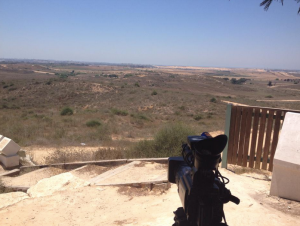
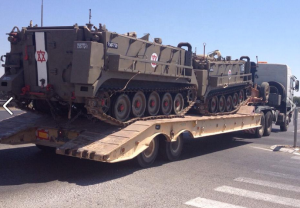
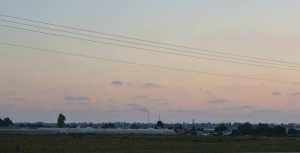
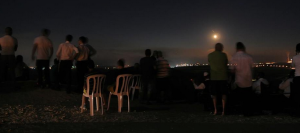

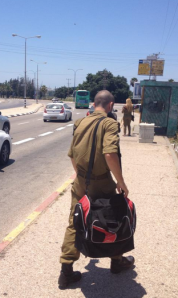
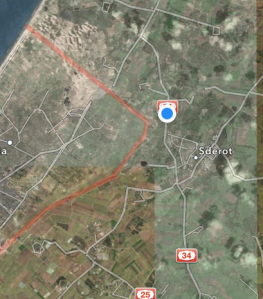
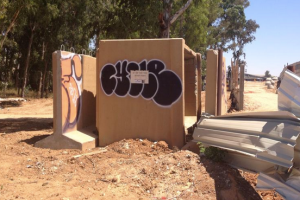
Pingback: The War on Israel Is Being Waged by a Hamas-Syria-Iran Troika | The Today Online·
Pingback: Civilian casualties in Gaza: Things to consider | Seth J. Frantzman·